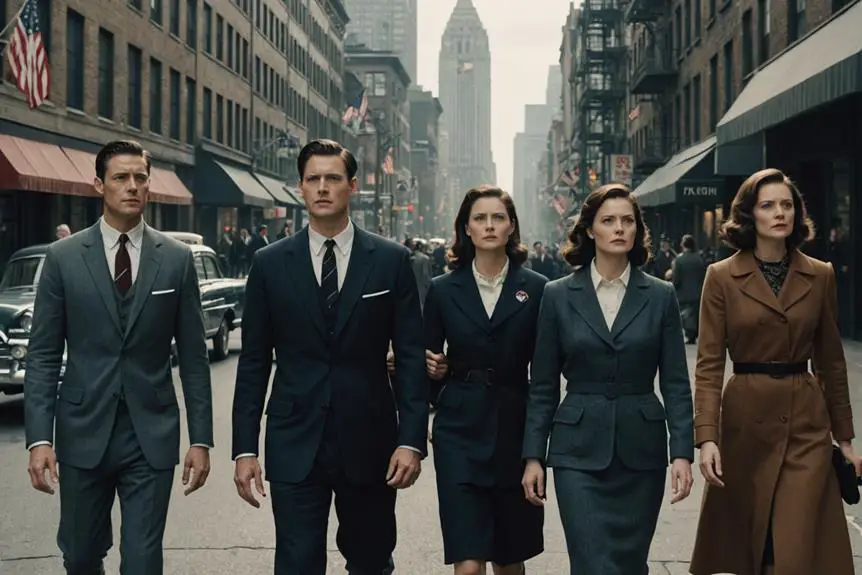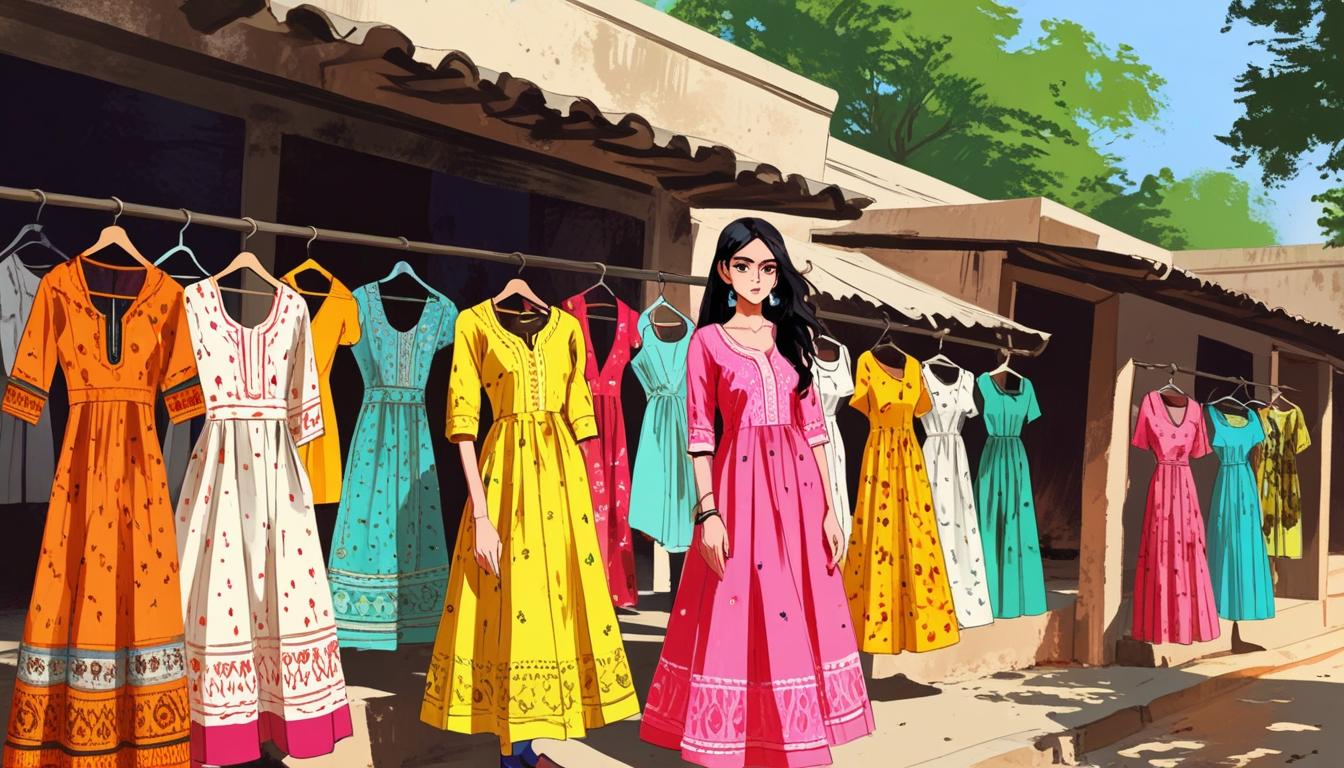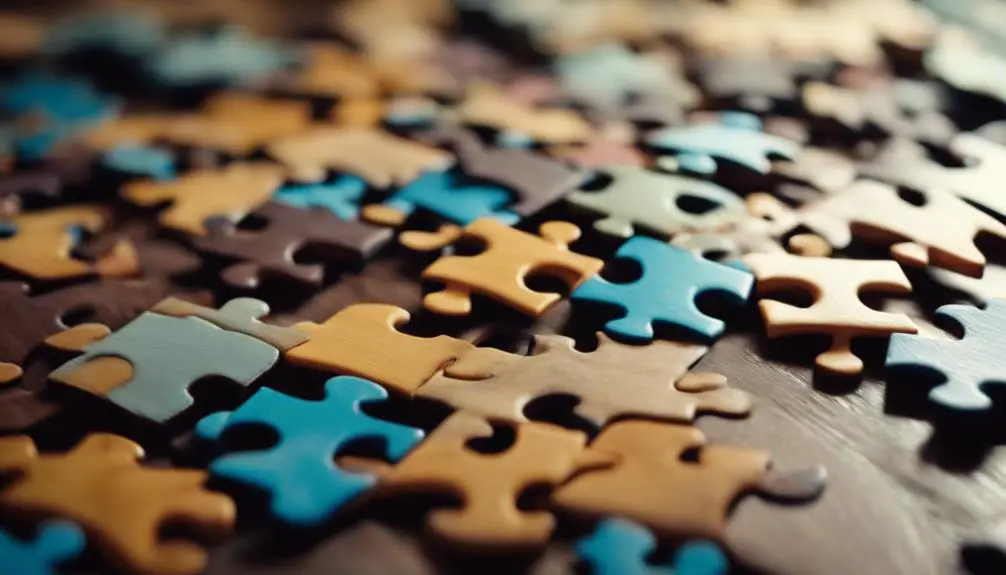Isn't it fascinating how clothing can serve as a silent narrative in "The Man in the High Castle"? You might notice that the show's outfits do more than just adorn the characters; they encapsulate their struggles and identities within a chilling alternate reality. From Juliana Crain's evolving wardrobe to the stark military designs, each piece tells a story of oppression and rebellion. As the series unfolds, the interplay of historical and cultural influences in the fashion choices invites a deeper look at what these outfits reveal about the characters and their world. What do these choices say about our own society?
Overview of the Series

"The Man in the High Castle" plunges you into a chilling alternate reality where Nazi Germany and Imperial Japan have claimed victory in World War II, reshaping the United States by 1962.
This gripping series, inspired by Philip K. Dick's novel, explores the complex themes of oppression, identity, and resistance within a divided nation. You'll find yourself captivated by the intricate storytelling and psychological twists that highlight the impact of totalitarian regimes on everyday life.
Set against a backdrop of an alternative history, the narrative intricately weaves together the lives of characters maneuvering this oppressive world, where freedom is a distant memory.
The show's critical acclaim stems not only from its compelling writing and casting but also from its high production values that transport you directly into this unsettling universe.
While the focus here isn't on costume design, it's crucial to note how the outfits beautifully reflect the aesthetics of the 1960s, intermingling influences from both Nazi Germany and Imperial Japan.
This attention to detail enhances the storytelling, immersing you further into the alternate reality that the Man in the High Castle masterfully creates.
You won't want to miss this haunting exploration of what could have been.
Significance of Costume Design
Costume design plays a pivotal role in "The Man in the High Castle," immersing you deeper into its alternate 1962 reality. Audrey Fisher's meticulous work breathes life into the characters, reflecting their identities and societal roles within a world shaped by totalitarian regimes.
The show's fashion integrates historical influences from Nazi and Japanese aesthetics, emphasizing how these oppressive powers impact individual expression and consumerism. The muted color palette—filled with olive greens and earthy browns—reinforces the wartime themes and modesty that permeate the narrative.
This attention to detail enhances the believability of the series, making it easier for you to engage with complex themes of morality and identity. Each costume tells a story, whether it represents rebellion against authority or the weight of cultural oppression.
As you watch, you'll notice how the designs are more than mere clothing; they're essential elements of the characters' journeys in this alternate history. The thoughtful integration of costume design not only enriches your viewing experience but also invites you to ponder the deeper implications of the world being portrayed, making it a significant aspect of the show.
Character-Specific Outfits
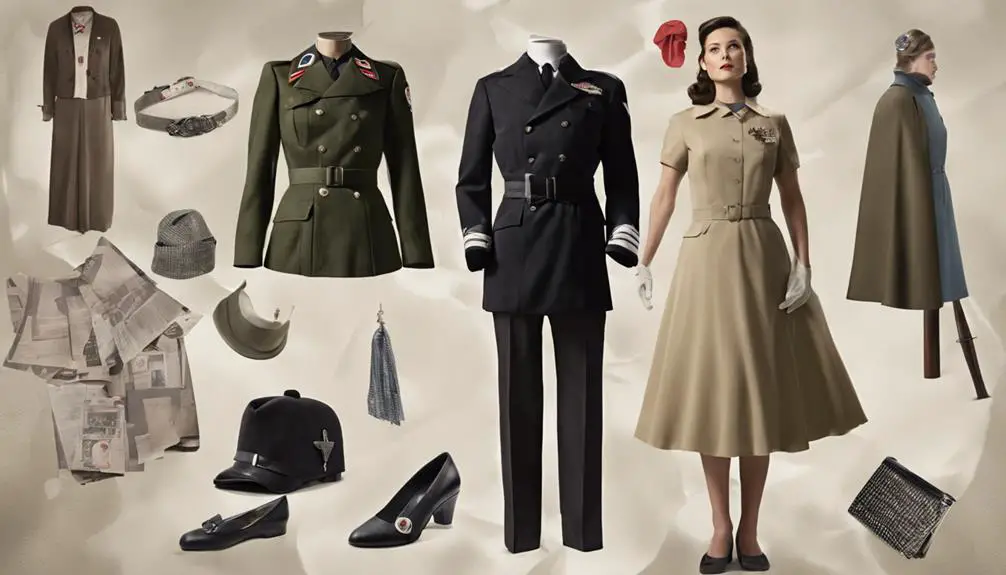
Audrey Fisher's attention to detail in costume design extends to how each character's outfit tells their unique story in "The Man in the High Castle."
Juliana Crain, for instance, shifts from playful dresses to tailored professional looks, showcasing her growth and defiance against the oppressive regimes. This change reflects her strong, orderly nature and reinforces her role as a determined protagonist.
Joe Blake's wardrobe, often featuring simple, masculine clothes, highlights his internal conflict. His brown leather bomber jacket, a symbol of rebellion, adds layers to his character, making his struggle against authority more relatable.
In contrast, John Smith's luxe black cashmere uniform conveys authority and power, perfectly aligning with his unsettling character. The stark difference between his uniform and the civilian clothes he dons reveals the complexities of his persona, creating a sense of believability in his chilling role.
Moreover, the meticulous design of costumes across the Japanese Pacific States, Greater Nazi Reich, and Neutral Zone adds depth to the narrative.
Each character's wardrobe reinforces their identities and societal roles, reflecting the larger themes of the series while showcasing the incredible detail and craftsmanship involved in the costumes of "The Man in the High Castle."
Cultural Influences on Fashion
While exploring the unique aesthetic of "The Man in the High Castle," you'll notice how cultural influences shape the fashion choices throughout the series. Costume designer Audrey masterfully blends Japanese and Nazi elements, creating a striking visual narrative that underscores the power dynamics in this alternate history. The khaki palette dominates the wardrobe, reflecting the military precision and authoritarian grip of totalitarianism.
Audrey extensively researched historical Japanese royalty and military uniforms, which inspired the show's distinct style. You'll see the iconic silhouettes of Nazi uniform design adapted to evoke both familiarity and unease, enhancing the oppressive atmosphere. This fusion of styles highlights the tension between tradition and oppression, making every outfit a commentary on the moral complexities of the regimes represented.
The fashion choices also incorporate subtle nods to 1960s styles, infusing them with militaristic and authoritarian aesthetics, which emphasizes how totalitarianism can stifle individual expression.
As you investigate deeper into the series, you'll appreciate how costumes serve as a medium to explore these cultural influences, transforming fashion into a powerful storytelling device that reflects societal themes and conflicts.
Women's Fashion Trends
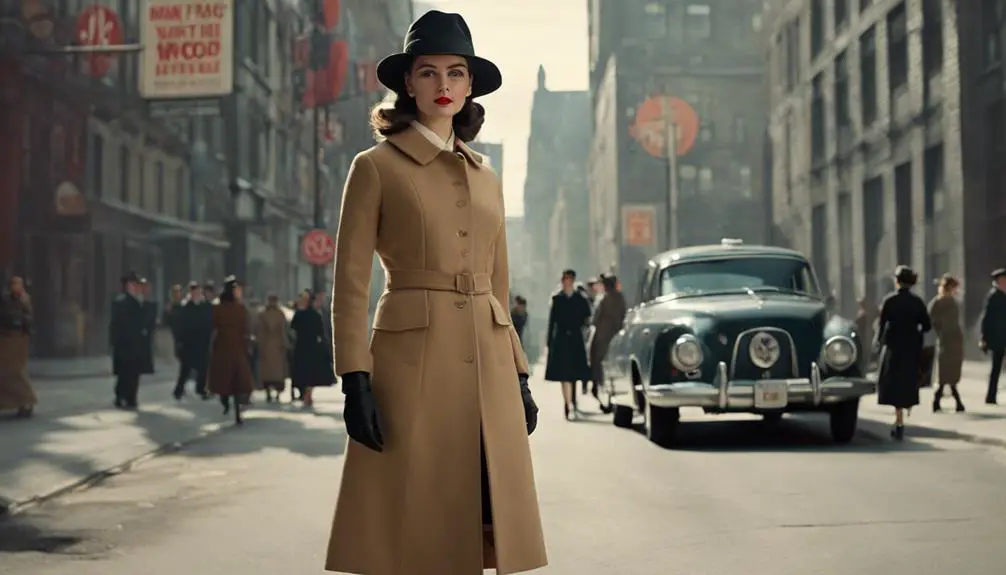
In the world of "The Man in the High Castle," women's fashion trends reflect the complexities of a dystopian society while celebrating feminine aesthetics.
You'll notice that the clothing often features shapely formal dresses that accentuate feminine curves, with simple floral patterns reminiscent of the 1940s and 1950s styles. The color palette is dominated by earthy browns and olive greens, mirroring wartime themes and the modesty required in such a challenging environment.
The costume design cleverly incorporates practical elements, like tweed jackets and trench coats, emphasizing the functionality needed during a time of military control. These pieces not only serve a purpose but also showcase a level of resourcefulness that resonates with the series' themes.
Plus, the frequent use of buttons in women's attire adds a childlike charm, enhancing that humble aesthetic.
As you explore the integration of 1950s styles, you'll see how this revolutionary fashion allows for creative expression while staying connected to historical influences.
Impact on Contemporary Style
The fashion showcased in "The Man in the High Castle" has left a lasting mark on contemporary style, merging retro influences with modern sensibilities. The distinct blend of 1940s fashion and hints of 1960s aesthetics has inspired designers to explore vintage looks in their collections.
You'll notice how the show's muted color palettes and military-inspired silhouettes resonate with current trends favoring utilitarian styles, appealing to those who crave unique wardrobe pieces. This resurgence of vintage fashion is similarly seen in brands like Ralph Lauren, where an appreciation for classic styles and quality craftsmanship remains strong, reflecting a cultural connection to vintage Ralph Lauren identification.
Moreover, the character-driven fashion themes encourage you to reflect on the stories behind your clothing choices, adding depth to your personal style. As you browse through modern clothing lines, you might spot structured outerwear and tailored pieces reminiscent of the show's costumes, showcasing its influence on today's fashion brands.
Even outside the runway, the series has sparked a wave of interest in Halloween and cosplay outfits, driving demand for designs that evoke its alternate history themes.
Frequently Asked Questions
Where Did They Film Man in the High Castle?
They filmed "The Man in the High Castle" primarily in Vancouver, leveraging its diverse filming locations for historical accuracy. The set design and character wardrobe enhanced visual storytelling, creating a cultural impact that resonated with audiences.
Who Is the Owner of the Antique Store in Man in the High Castle?
You're exploring the antique store's owner, Mr. Tagomi. His character development reflects historical context and cultural significance, influencing narrative themes. The fashion influence in his interactions enhances the store's role in the story's depth.
Is the Man in the High Castle Still Being Made?
You'll find that "The Man in the High Castle" isn't still being made. Its plot twists, character development, and alternate history captivated viewers, but no further production has occurred since its acclaimed conclusion and impressive thematic elements.
Why Are the Films so Important in the Man in the High Castle?
The films' symbolism and narrative impact drive character development, exposing alternate history through visual storytelling. They provide cultural commentary, challenging you to reflect on choices, fate, and the power of media in shaping identity.
